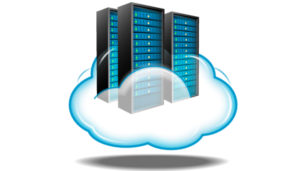How Does Cloud400 Work?
The purpose of this blog is to explain how setup of IBM i (iSeries/AS400) cloud hosting differs from setup of other cloud hosting solutions offered by AWS, Azure and other popular cloud hosting solutions.
Disclaimer: IBM i is an operating system. iSeries and AS400 are names for IBM servers. I use them interchangeably to make it easier to research on the web.
This last week I got a request from a prospective user who wanted to know if Cloud400 setup was like Amazon AWS, Azure or other popular hosting services. In other words, can you log into Cloud400, setup the needed resources and start using this IBM i (iSeries/AS400) hosting solution immediately?
Well, no. It does not work that way because of how the IBM i operating system works.
So, let me explain how Cloud400 for IBM i applications works.
In most cases, Cloud400 hosting is for clients that want to move their business applications from an on premise server to a hosted environment. In addition, we have software developers that host their applications as “Software as a Service” (SAAS). We also have users that test their applications and software on Cloud400.
First, the Cloud400 team needs to understand the user’s needs. Or, said differently, what hosting resources are required for CPW performance, RAM memory, storage and backup strategy.
Second, we need to understand the version of IBM i OS they need (i.e. V5R4, V6.1, V7.1, V7.2, V7.3). We need to understand what licensed software they will run, including IBM as well as software from independent providers.
Third, we need to understand their networking and connectivity so we can support the users in all of the locations.
In short, we need to do this upfront analysis to prepare an implementation plan to on-board a new Cloud400 client.
When the client is ready to move forward, they send us a complete Save21 system save. We create a Logical Partition (LPAR) on the designated IBM POWER server tailored to the client’s needs. We restore the Save21 to that LPAR.
Once the LPAR is loaded, our networking team works with the client’s network engineer to establish user connectivity to Cloud400.
At this point, we start the 60-day free trial. We have found a free 60-day trial offers several benefits. First, it is our way to prove to our client that we are competent. We provide friendly, attentive, and expert service.
It also gives the client a chance to understand how their applications will actually perform on Cloud400. This gives both of us the chance to fine-tune the setup prior to go live.
During this trial phase, the client tests their applications. Generally, this includes day-end and month-end routines. They test peripherals to make sure all aplications work as expected. They test interfaces to make sure the software works as expected. A Cloud400 project leader may also recommend other tests for the client.
Upon test completion, the client works with the Cloud400 team to plan go live.
In its simplest form, the client sends overnight a Friday Save21 backup for the Cloud400 team to load over the weekend for go live.
Even so, over the years we have encountered unique situations that require different approaches for operations that run 24 x 7 or businesses that must interface to the U.S. Government for compliance. We address these special requirements as the need presents itself.
To sum it up, Cloud400 setup is not like AWS, Azure or most other hosting solutions because of the IBM i operating system.
Another key factor is that the applications we host are sizeable and in most cases cannot be transferred to us by FTP.
These are the reasons our Cloud400 setup is the way it is.
Thinking about moving your on premise server to Cloud400? Give me a call at 714-593-0387 or email me at blosey@source-data.com.

Leave a Reply